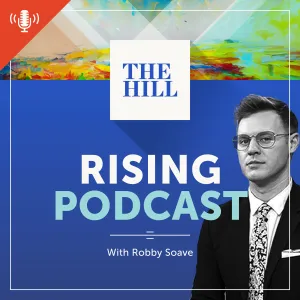Trump trip to rural Wisconsin highlights GOP’s turnout concern

President Trump’s torrid campaign schedule before the midterm elections has been packed with mega events at huge arenas where thousands of fans wait in line for hours to see his extemporaneous speeches.
But on Wednesday, Trump’s itinerary takes him to Mosinee, a town of about 4,000 residents in rural Central Wisconsin, to stump for Gov. Scott Walker (R).
Trump’s trip highlights one of the concerns Republicans like Walker have in this year’s contests: The voters who showed up to deliver Wisconsin to the Republican presidential nominee for the first time since the Reagan era may not be so inclined to return to the polls to vote for that president’s party in a midterm election.
“In some of these very rural seats where Trump got 50 percent plus, the only way to get that number again is to get [those voters] to show up,” said Scott Fitzgerald, the Republican leader of the Wisconsin state Senate. “When you look at Western Wisconsin, up and down the river, and up north where Trump did so well in ’16, is there enough energy to get those people who were hard-core supporters?”
Marathon County, where Trump will be on Wednesday, voted for Barack Obama in 2008 by a wide margin. It favored Mitt Romney by 8 points in 2012 and went for Trump by a whopping 18 points in 2016.
“That’s the heart of the rural north, where Trump ran up some numbers impressively in 2016,” said Charles Franklin, the political scientist who directs the Marquette Law School poll in Wisconsin.
Statewide, 22 counties that voted for Obama in 2012 flipped to support Trump in 2016. Only one state, Iowa, had more counties flip from blue to red between those two elections.
After giving Trump their electoral votes in 2016, Wisconsin voters have showed signs they are interested in divided control. Democrats won a state Senate district in a special election earlier this year that Trump carried by 17 points in 2016, and a state Supreme Court candidate backed by Democrats won a high-profile and high-priced election.
Walker has been sounding alarm bells about the wave of Democratic enthusiasm — and the lack of Republican enthusiasm — for months. After Democrats won the state Senate special election, Walker said on Twitter the results should be a “wake-up call” for Republicans.
“The fact is that President Trump is returning to the heart of an area that turned out big for him in 2016 and can be crucial in 2018,” said one Wisconsin Republican close to Walker’s campaign. “The president remains hugely popular with these voters, and has an ability to mobilize them in a year dominated by Democrat energy.”
Walker himself faces his fifth difficult election fight in the space of twelve years. He has topped 53 percent of the vote only once, in the 2012 recall election.
This year, polls show he is struggling against Democratic nominee Tony Evers, the state superintendent of public instruction. An NBC News/Marist poll conducted earlier this month showed Evers leading by ten points; a Marquette poll conducted later that week showed Walker leading by just one point.
Franklin said his surveys show signs that Republican voters in rural communities are less enthusiastic about casting ballots than voters in other parts of the state.
“Clearly one of the concerns that Republicans must have is that especially in the rural areas of the state where Trump did well, that reflected support for him but not necessarily support for Republicans in general,” Franklin said.
Trump won Wisconsin’s electoral votes the same day Sen. Ron Johnson (R) won re-election to a second six-year term.
But election results show the two Republicans won very different races. Johnson outperformed Trump in the Milwaukee area and its suburbs, while Trump took more votes than did Johnson in the rural central, northern and western corners of the state.
The potential drop-off in turnout threatens not only Walker, but a tenuous Republican majority in the state Senate. There, Republicans hold 18 of 33 seats; Democrats and Republicans are defending three potentially competitive seats each.
“This cycle is certainly making sure the Republicans hold on to one of the two chambers or to the executive branch. We’ve gotten a lot accomplished, we’ve done a bunch of things, but they’re controversial,” Fitzgerald said. “It’s going to come down to whether the governor can make the case that fiscally the state is in better shape.”
On Wednesday, Trump will be the one making that case to his core fan base, in rural Wisconsin.
Copyright 2023 Nexstar Media Inc. All rights reserved. This material may not be published, broadcast, rewritten, or redistributed. Regular the hill posts











